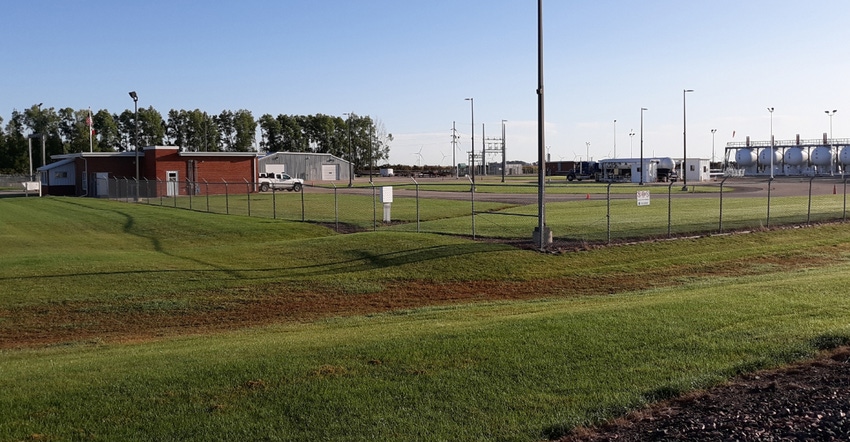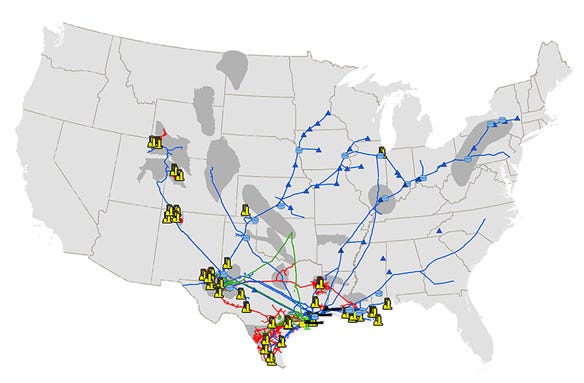October 22, 2019

By Loren G. Flaugh
An unusually protracted Midwest crop planting season lasting well into late spring may have troubling consequences for drying down the corn harvest this fall. The 2019 corn crop is far wetter than usual at harvest.
According to information from the U.S. Energy Information Agency, the availability of propane for the 2019 corn drying and home heating season is in the middle of the range of the past five years. And unlike what the Midwest experienced in the 2013-14 winter, infrastructure is now set up to deliver higher quantities of heating fuel into the region than it was the last time we had a wet, late corn crop.
In an updated report on Oct. 8, EIA forecasts U.S. propane production at natural gas plants and refineries will be 12% higher this winter than last winter. With higher demand for drying corn and in some cases soybeans this fall, propane prices will likely rise.
Corn Belt using more propane
Dave Hicks is general manager of Producers Co-op in O’Brien County, a propane distributor in that area of northwest Iowa. When asked recently if the co-op had ever run out of propane, he said, “Yes. Our bulk storage plant has been empty, as well as the delivery trucks. We wait for full tanker truckloads to come in. It’s been probably four years since we last had a scenario like that. It’s usually a short-term event.”
When asked if the larger MidAmerican Pipeline Co. (MAPCO) propane terminal in northwest Iowa has ever run out of propane, Hicks replied, “Absolutely. Almost every year they get busy during corn drying season and run low or run out.”

PIPELINE DELIVERY: The Enterprise Pipeline Co. system, which includes the MAPCO system, brings propane up through central Kansas, eastern Nebraska, northwest Iowa and into Minnesota. Another branch provides propane to eastern Iowa and western Illinois.

Sometimes the propane transport companies, hauling propane in big trucks, have to travel as far as Greenwood, Neb., and central Kansas to get a 10,000- gallon load and return. The propane transport company Producers Co-op uses most often is Sioux Tank Line, based at Alton, Iowa.
“We’ve been increasing from year to year the number of gallons of propane delivered to customers,” Hicks said. “A lot of it is due to us being out there selling our product. Also, a lot of the increase is because of continuous building of hog confinement sites since the 1990s and the larger commercial corn drying setups.”
Demand impacts transportation
The middleman between the large propane pipeline delivery terminals and the smaller rural distributors such as Producers Co-op are the over-the-road propane transporters like Sioux Tank Lines. “Our drivers pick up loads at mostly Iowa and South Dakota pipeline terminals and deliver the fuel to customers like Producers Co-op and numerous gas stations. Producers Co-op then delivers the propane to farmers and other users,” said Todd Vander Griend, manager of Sioux Tank Lines.
Vander Griend said his drivers load mostly out of the Sanborn MAPCO terminal. When Sanborn runs short, they may go to other MAPCO terminals like Whiting or Ogden in Iowa and on rare occasion to MAPCO at Greenwood, Neb. Nustar Energy at Rock Rapids, Iowa recently added small propane terminal and there’s a small terminal near Canton, S.D.
Regarding the possible propane shortage on the horizon this fall and winter, Vander Griend said, “It could be a nightmare because the corn isn’t drying down in the field and much of it is barely mature. Farmers will have to harvest corn wetter than they prefer, and dry it down on the farm or haul it to the elevator and pay a dockage fee and a drying charge if it’s too wet.”
Pipelines play key role
Vander Griend added, “Four years ago, this area experienced a severe propane shortage. It was cold, and it was the type of deal like a perfect storm. Once it gets cold, you have to heat houses and buildings for all the chickens, cows and pigs. We are one of the largest pork-producing counties in the nation, and all these animals have to be kept warm. Plus, we haul a lot of propane for corn drying.”
Todd Vander Griend’s dad, Dan, has served as president of the family’s propane trucking business for 30 years. He has this observation regarding a possible propane shortage this fall and winter: “I wouldn’t say it’s going to be a shortage of propane. I would say that the pipeline companies will be unable to get the propane to where we need it quickly enough. The existing pipeline diameters are too small to transport such a large volume that fast. There’s plenty of propane stored in the salt caverns in central Kansas.”
Flaugh writes from Primghar, Iowa.
You May Also Like




